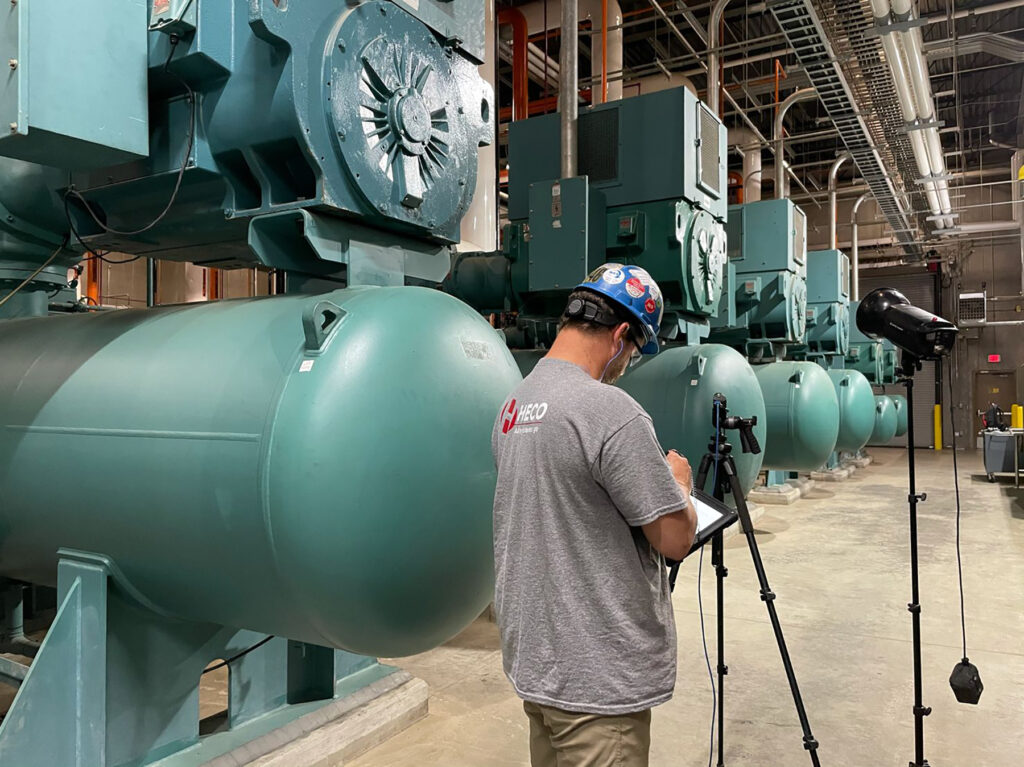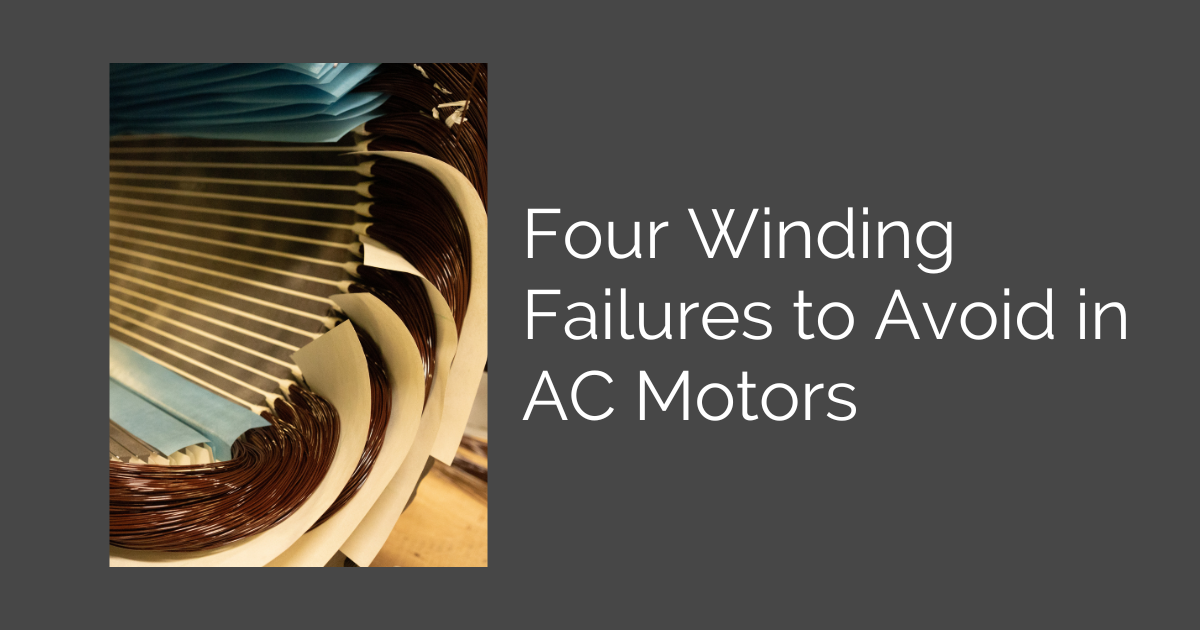Four Winding Failures to Avoid in AC Motors - HECO
January 10, 2024
Did you know the vast majority of electric motor failures are preventable?
Sure, everything has a limited lifespan so some failures cannot be prevented, but many of the motors that come into our shop have suffered an unnecessary failure.
Since HECO launched in 1959, we’ve performed countless motor failure repair jobs. Motor rewinds in particular account for about 32% of all AC electric motor repairs.
These motor winding failures fall into four major categories based on cause: thermal stress, mechanical stress, electrical stress, and environmental stress.
Thermal Stress Failures
Temperature plays a major role in electric motor failure. In fact, research shows that the lifespan of an electric motor is inversely related to operating temperature.
This means that the hotter a motor runs, the quicker it is going to fail. For example, for every 10 degrees the motor operates over its rated winding temperature, the motor’s insulation life is cut in half. Because of this, avoiding situations that increase the operating temperature of the motor can significantly extend its lifespan.

One situation that increases the operating temperature of an electric motor is operating a motor beyond its designed output limits. For any point that the driven equipment demands more output than the motor was rated for, temperature will rise and decrease the motor’s service life.
Additionally, load cycling, repeated starting/stopping, and stalling a motor can also cause temperatures to increase.
Voltage variations can increase winding temperature, too. They occur when the motor is subjected to over- or under-voltage conditions. Another problem is voltage imbalance in which the supply voltage is not equal. This leads to unbalanced currents in the motor’s winding which can increase the winding temperature.
Other sources of compounding heat include bearing temperatures (including the lubrication system), insufficient ventilation, poor positioning of air vents, heat generated by nearby machines, and losses related to belts and couplings.
All these situations are preventable by understanding the electric motors you use and continually monitoring these conditions using technology such as infrared testing to help prevent thermal stress failures for your electric motors.
Mechanical Stress Failures
Mechanical stress failures often take the form of coil movement. If the coil is poorly blocked or braced, it will move and risk damaging the winding. Coil, wire, and winding movement also takes place every time the motor is subjected to a thermal cycle via expansion and contraction of its components.
Another example of a mechanical stress failure is movement due to motor vibration which can have a variety of starting points including an eccentric shaft, shaft or bearing misalignment, incorrect air gap, extremely worn bearings, and/or poor structural support.
Keep in mind that problematic movement is not always visible and dramatic. It can be movement invisible to the human eye, but it can wear away even the best quality insulation over time. That’s why HECO uses a combination of vibration analysis and motion amplification to ensure mechanical stress is discovered before it’s too late and an expensive repair is needed.

Electrical Stress Failures
Electrical stress failures can take the form of turn-to-turn, coil-to-coil, phase-to-phase, coil-to-ground, and open circuits (or any combination of these). These failures may be the result of issues with winding insulation or cause problems with the insulation.
There are other ways that electrical stress can damage the windings, too. The use of minimal insulation or poor-quality insulating material can cause electrical stress failures to develop. Insulation can be gradually thinned to the point that conduction is possible, often as a result of poor blocking or bracing.
Another potential issue is partial discharge resulting from an air pocket in the insulation or contamination on its surface. These partial discharges will damage the windings by eroding the insulation over time and often exceed 6kV. Transient voltages, such as lightning strikes or failed circuit breakers, can also result in serious damage.
HECO has the right equipment to test the windings’ condition and indicate a potential issue before a failure occurs.
Environmental Stress Failures
Moisture, particulates, chemicals, and poor airflow contribute to environmental stressors.
Moisture can be a major problem for electric motors. It may be the result of a buildup of condensation, general equipment washdown, or just an extremely humid environment. Regardless of the cause, moisture can lead to shorts and other issues with the winding.
The buildup of dust and debris on the motor itself can be a problem, too. When you expose the motor and its winding to abrasive particles (sand, cement dust, fly ash, etc.), the insulation on the winding erodes over time. It also makes it hard for components meant to conduct heat away from the motor, such as cooling ribs, to do their job.
Chemicals can be an issue for motor windings as well, and not just corrosive substances such as acids. For example, fly ash and carbon black are both electrically conductive. As they begin to build up, they can cause electrical issues that are not only hard to track down but hard on the winding insulation.
Finally, don’t forget what we talked about earlier with regard to ventilation. A buildup of contamination (think dust or paper pulp) will block vents and lead to thermal failure as the motor starts running hotter than it should. Exterior filters can also become blocked with contaminants. A clogged air filter will block off the air supply needed to keep the motor cool.
Preventable Failures
There are a host of ways that a winding can fail. The good news is that knowing what might cause the windings on your motors to fail also means that you know how to prevent them.
Remember that you can keep the vents clean, change air filters, work to keep the windings free of contamination, ensure that enclosures keep dust and water out, and keep loads within the operating range to prolong motor and winding lifespans.
Finally, keep in mind that preventative maintenance and the use of an EASA-accredited repair shop combined can help your motors last!
Posted in Predictive, Repair
